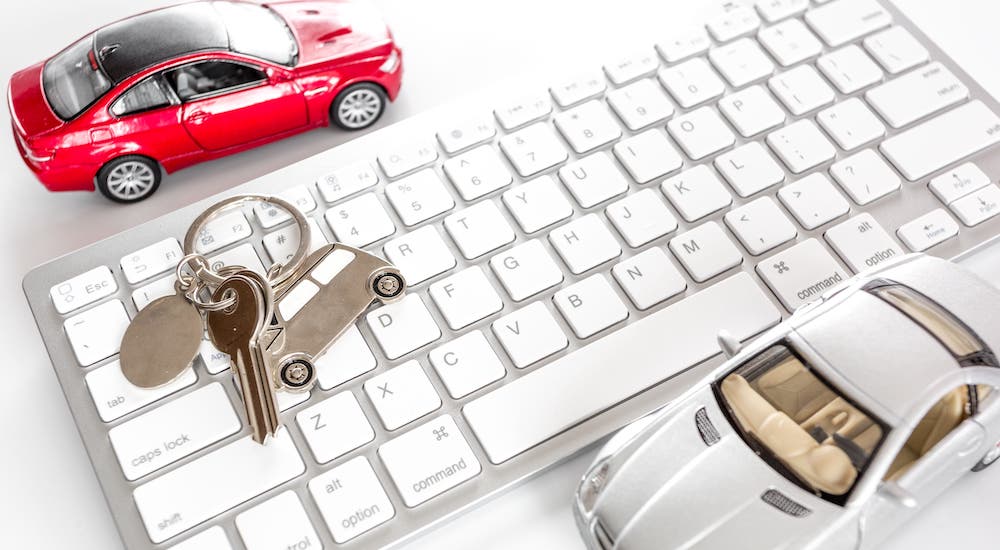Ask any tech entrepreneur, and they’ll tell you that the role of online business is to disrupt traditional markets and offer buyers a more efficient way to receive goods and services. The automotive industry is bringing up the rear on innovation, but the renaissance is impressive nonetheless. Finding an online car dealer five years ago was nearly impossible, but today there are a plethora of companies selling cars online. In fact, many traditional brick-and-mortar dealerships are getting in on the game, creating internet-based sales teams and trying to appeal to virtual buyers.
The benefactor of this advancement is the consumer. Lower overhead costs and less paper means better, more aggressive deals, especially on used vehicles. Some companies can offer national sales by acting as a broker, locating a vehicle in the buyer’s area, and arranging for the sale from a distance. This flexibility and agility give online car dealers an advantage, especially as consumers continue demanding convenience, on-demand service, and virtual buying experiences across a whole spectrum of areas, including travel, grocery shopping, and cable TV.
The automotive industry presents some logistical challenges, such as physical vehicle delivery and after-the-sale maintenance and service. However, many online dealers get around this by aligning with a local dealer network. While a company transacts sales completely virtually, it’s physical location offers buyers a place to pick up their new car or bring their vehicle for service and maintenance.
How Online Buying Began
With the advent of the internet, buyers began deep diving into research prior to buying a car. This included finding sites like Kelley Blue Book to help understand dealer margins and prepare themselves for the negotiating process. Car pricing reports became commonplace, first as pay-per-call dial-in 900 number recorded information and then as a service provided by organizations like AAA. Buyers sought to dig deeper into the purchase process and looked for ways to find dealer rebates and specials.
Over time, automakers and dealer networks recognized that buyers wanted more information ahead of their purchase. They wanted to browse inventory and understand wholesale pricing, as well as value their trade and shop finance interest rates. National dealer chains, like Carmax, attempted to create a no-haggle sales model and listed all inventory and prices on their website. Buyers could calculate payments and locate vehicles across the national network of stores.
Today, most – if not all – automobile dealerships post current new and used vehicle inventory online. Listings usually include multiple photos, videos, and specific pricing. If it’s a used vehicle, a Carfax report is linked so that buyers can see the vehicle’s history. It’s not unusual to see a chat bubble where a live sales representative is standing by to answer questions and set up test drive appointments. Many dealerships offer online sales to varying degrees, but few are 100% virtual. The traditional brick-and-mortar dealership business model relies on foot traffic and the emotional, sensory experience of ‘kicking the tires’ and ‘inhaling that new car smell’ in order to close the deal. It takes a while to realize that many buyers value convenience above all else.
Online Dealerships Today
A fully-virtual online car-buying experience is still rare; however, a few companies are creating business models that deliver everything a traditional dealership can, with far fewer logistical hassles for the customer. In other words, these companies are pioneering the next industry-disrupting consumer movement. It’s no small feat to redesign the car-buying process, but as with all change, retailers must adapt to consumer demands. In this society of convenience, online dealerships must provide a car buying experience with high levels of service, including clear communication and rapid response times. Buyers expect to do business after hours and around their work schedules, so features like virtual showrooms and electronic documentation are essential.
There are several companies out there that are offering a true virtual car buying experience, starting with an impressive photographic listing of every vehicle in its inventory, with in-depth detail and a free viewable Carfax report so that buyers can do their due diligence. As a used car dealer, attention to warranties and protection is important in order to reassure online buyers that the company stands behind vehicle quality. That’s why online car dealers are offering warranties that compete with those offered by brick and mortar dealerships, and they usually have a short grace period where you can test-drive your new vehicle and return it if you aren’t satisfied.
Successful online car companies, like Online.cars, for example, are finding a way to pull the best parts of a traditional dealership and combine that with the added convenience of online shopping. Buyers still get access to the service department and retail sales and finance professionals, while offering novel extra services, like bringing the test drive to the customer and arranging new vehicle delivery and trade-in pickup at a time and place designated by the customer. It seems that sites partnering with an already established dealership may be the best way for this system to work.
However, other sites, like Carvana and Shift, are making a go of it on their own without relying on a dealer network for support. The streamlined, all-virtual purchase experience will appeal to early adopters (the same folks that trusted Uber before the rest of us), but winning over the general public will take time. The existing dealership network is still vast and very community-entrenched, and online car sales still carry a hint of danger.
What Lies Ahead
The interesting business challenge associated with online car buying is logistics. Traditional dealers have showrooms, lots, and annexed storage for additional inventory that people can see, touch, and drive for themselves. They also have in-house parts departments and service centers to take care of all the buyers’ needs onsite. Online sellers not affiliated with a dealer network must rely on less traditional infrastructure to sell and support the sale of new and used vehicles.
Carvana is building touchless delivery sites, called Vending Machines, for easy customer pickup. These high rise buildings store dozens of vehicles, and buyers arrive, deposit a special coin, and wait while their new vehicle is ‘dispensed.’ They can then sign paperwork and drive it away. There are currently 24 Vending Machine locations, mostly east of the Mississippi, with more planned.
Carvana’s reliance on infrastructure creates an interesting opportunity for existing automobile dealerships. Forward-thinking dealers have a chance to add to or convert their own sales strategy to a more virtual process. Smart dealers will keep a close eye on companies like Online.cars and Carvana because they’re the pioneers. Metrics like customer satisfaction and quality of customer interfaces – such as the use of simple online forms – help determine the acceptance level of these alternative car buying platforms.
Regardless of the speed of change, one truism remains: consumers will keep demanding new and used vehicles. That demand has already changed how they shop. Most buyers shop and conduct research online before stepping foot into a dealership, while currently, very few consumers intend to actually purchase the car online. That’s a big gap to fill and one that online car dealers need to focus on in order to grow.
If trending virtual processes like delivered test drives (overnight, even) and virtual service appointments with vehicle pickup and drop-off service continue, they’re likely to bleed over into the sales process itself. The biggest hurdle is consumers’ desire to see, touch, and drive a car before they buy it. If online sellers can unlock the secret to making test drives more accessible – as in, bringing the car to the customer in a timely manner- then online sales will increase. Until then, the industry is likely to see slow incremental growth.
Online Shopping is the Future of Car Shopping
Perhaps websites like Online.cars are on to something by blending the best parts of a traditional dealership with the convenience of an online sales experience, particularly in the used car segment. Having an affiliation with a respected local dealer lends credibility and also reassures buyers that vehicles will be high quality and, in many cases, still covered by a factory warranty. Available other warranties are another plus, giving buyers reassurance that if something goes wrong, there’s a path of escalation and a physical location to bring their vehicle for repairs. Meanwhile, sites like Carvana are trying to make the car buying process completely virtual for ease and accessibility.
Whichever type of online dealer you choose to shop with is going to provide you with a unique buying experience. Online car buying has evolved from its origins as a trendy, non-traditional buying option. Today, online car dealers are well-respected and trusted, thanks to modern marketing tactics and affiliations with traditional dealerships. We expect the trend to continue as busy consumers demand convenience, and the work-from-home virtual workforce continues buying into virtual lifestyle experiences.






